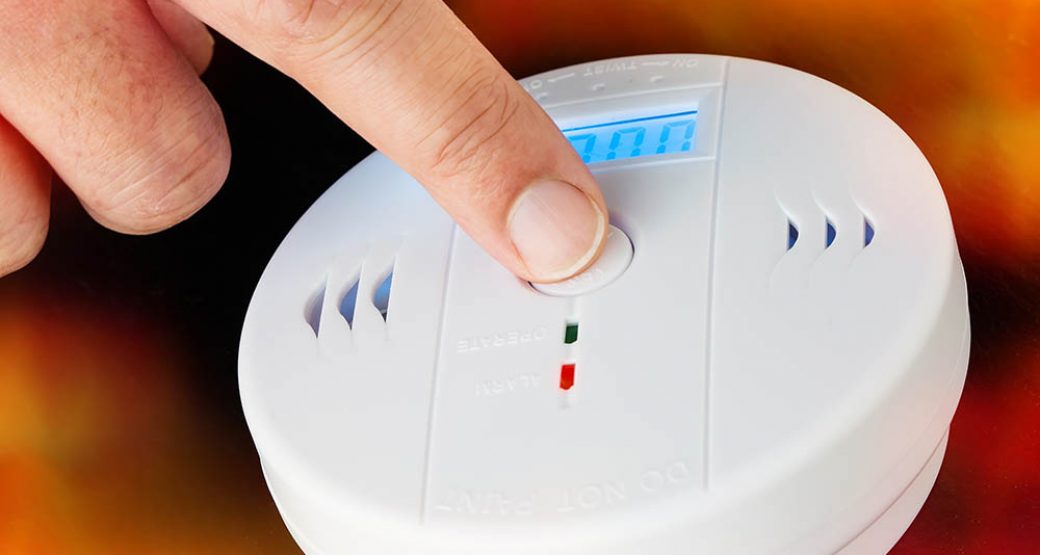Installing carbon monoxide detectors correctly is as important as buying the right ones. The higher the number of fuel-burning appliances in your home, the more carbon monoxide detectors you’ll want to install. Even if you don’t have fuel-burning appliances, you’ll want to install carbon monoxide detectors to protect every floor of your home.
Carbon monoxide is a harmful, odorless, and colorless gas that human eyes cannot detect. According to the CDC, carbon monoxide poisoning is one of the top cause death at home and is especially dangerous for children. Moreover, homeowners observe maximum carbon monoxide emergencies during heavy snowfall when the electricity goes out, and they use alternate methods to stay warm.
Therefore, installing carbon monoxide detectors on every level of your home, including the attic and basement, is important.
How Many Carbon Monoxide Detectors Do You Need?
How many carbon monoxide detectors you’ll need will depend on the size of your home, the number of levels in your home, the number of bedrooms, etc. According to the International Associations of Fire Chiefs, you should install carbon monoxide detectors on every level of your home, inside every bedroom, and outside every sleeping area, including the attics and basement.
Installing Carbon Monoxide Detectors — Where to Place Them
Make sure you install at least one carbon monoxide detector in the same room as the potential source. However, place it at least 15 cm away from the ceiling and at least one meter away from the appliances.
Avoid installing carbon monoxide detectors behind your furniture, inside the cupboards, or near an entrance door or ventilation. Never install carbon monoxide detectors next to items that release heat such as cooker, boilers, and heaters.
Just like the smoke detectors, avoid installing carbon monoxide detectors in areas that are exposed to steam and condensation, such as a kitchen or bathroom. For maximum efficiency, place the carbon monoxide detector on the wall instead of the ceiling. Smoke alarms are typically placed on the ceilings as the smoke always rises toward the ceiling.
Here’s a list of some other areas where we do not recommend installing carbon monoxide detectors:
- A basement, garage, or attic that is not heated
- Areas prone to high humidity
- Places that are exposed to sprays, chemicals, and solvents
- Spots or corners where airflow is limited
As far as commercial buildings are concerned, the same installation rules apply, i.e., every floor and HVAC zone should have at least one carbon monoxide detector.
Testing Your Carbon Monoxide Detectors
Testing the carbon monoxide detector is very easy — just push the test button! Make sure you test all the detectors individually. It would be a good idea to involve your family members in the testing process, as well, so everyone knows what to do. But don’t just “set it and forget it.” Maintaining your carbon monoxide detectors is as critical as installing carbon monoxide detectors in your home.
Here are some useful carbon monoxide detector maintenance tips:
- Check the functionality of the carbon monoxide detectors at least once each month. As already mentioned above, simply press the test button and the alarm will go off. Also, don’t forget to check if the sensors are working.
- Change the batteries twice a year (daylight savings time is a great time).
- Try to keep the detectors clean and dust-free. Stuck contaminants and dust can result in the malfunctioning of your carbon monoxide detectors. A sporadic vacuum cleaning can eliminate the dust stuck in the interior as well as the outside of the detectors. If you want to clean the device systematically, remove it, detach the power, and remove the exterior covering. Using a dry cloth or vacuum cleaner, remove any dust that is visible.
- Examine the manufacturing date on every carbon monoxide detector unit and change the devices before they approach the expiry date.
Tying Carbon Monoxide Detectors Into Your Security System
Carbon monoxide detectors can and should be integrated into your home or commercial security system through the main panel of your professionally-installed system. Most of the home and commercial security systems are designed in a way that allows you to set up different detectors such as smoke detectors, carbon monoxide detectors, and heat detectors in one system. When tied into your security system, in the event that the carbon monoxide detector goes into alarm, the Fire Department will be dispatched.
This is why you need a professional home or business security solution. Make sure that every device is functioning properly and keeping your important assets safe and secure.
At ProTech Security, we have a strong history of experience, innovation, and customer service. The ProTech Security Advantage is more than 30 years of service in Northeast Ohio and a strong commitment to providing quality, cost-effective protection for homes, businesses, educational institutions, and government facilities. To see what ProTech Security can do for you, contact us today.



